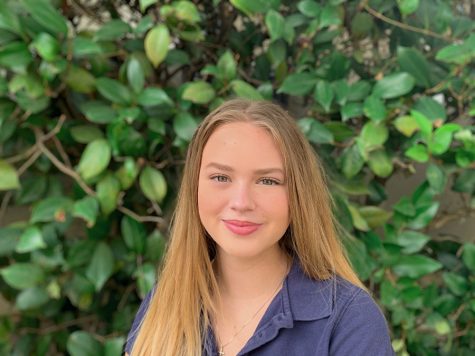Student mental health in the age of Zoom
Tologs used to be addicted to their screens. Now, they want nothing to do with them.
To say the least, 2020 has been a stressful year. The Covid-19 pandemic has impacted all aspects of life, which for students primarily means school. When quarantine first began in March, no one anticipated spending the rest of 2020 — and possibly longer — inside the home, going to school from behind a screen.
Now, however, going to school remotely has become a long-term condition, and many students have learned that online school comes with its own set of problems — namely, declining mental health.
FSH has made several moves in order to address the mental health concern. The school has been extraordinarily proactive during this time, but there still remain challenges.
FSH addresses mental health in the age of Zoom
During this time of isolation, monitoring students’ mental health has become more important than ever for the FSH administration. Before the fall semester started, the school shifted to a schedule with shorter periods and no classes on Wednesdays in order to make room for students to work asynchronously and spend less time on screens. Teachers also put work into making their topics pages on TologNet as detailed as possible so that students can navigate their work independently.
Once the fall semester was underway, the school decided to check in on how the student body was doing by sending a survey out to all students. The Administrative Team, a committee of about a dozen people who work with Principal Sister Celeste Botello, decided the school needed information specifically about student workload.
Ms. Nora Murphy, the director of library and research programs, and Ms. Sherrie Singer, the assistant principal for curriculum and instruction, created the survey, and on October 20 and 21, students took it during their religion classes. The survey asked students to report the number of minutes they were spending doing work for each class.
“My first reaction [upon seeing the survey] was that students and teachers are spending way too much time looking at screens each day. Everything takes longer in this environment, and so much of what we do is on a screen,” Ms. Murphy said.
Ms. Murphy and Ms. Singer shared the results of the survey with the faculty during a Wednesday afternoon meeting.
“I’d heard rumors that students were spending way too much time on their computers, and I’d heard rumors that the schedule changes had led to students doing more work than we expected. The survey really confirmed what I’d been hearing, so I’m happy the students were given an opportunity to share that with us,” Ms. Jessie Ryan, the dance teacher, said.
Mr. Tom Badzey, who is the school’s lead advisor and teaches Honors Psychology, said the survey helped him to look at student’s schedules in a different way.
“The survey clearly indicated that there is a need to take into account how long it takes students to actually get stuff done. Seeing the data in that form really gave us a lot more insight as to what is really going on. I think that as long as we continue to make mental health a priority over how much content we are covering in class or something like that, then I feel like we will be making better decisions,” Mr. Badzey said.
The survey has led to actual change within the classroom. After reviewing the survey results, teachers cut back on work and cut down on time spent on Zoom during class. Teachers have also been more focused on easing the minds of students.
“Something I’ve done with students is writing out a physical list of non-screen activities to take part in. I’ve noticed that if students are mindful of the present and their needs, it provides them with more balance,” Mr. Badzey said.
Mr. Charlie Tercek, who teaches English I and English III, has made an effort to give his students a chance to interact with each other during class in order to boost his student’s mental health.
“We realize that all of you are probably a little lonely. It’s crummy to go to school alone every day. So, as much as possible, I put my students in small groups in breakout rooms during class to work together. And I let the groups run a little long so everyone has a few minutes to hang out with each other and socialize,” Mr. Tercek said.
Mental health from the student perspective
While Flintridge Sacred Heart has made efforts to prioritize the emotional wellbeing of students, much of the stress of online school is unavoidable.
The stress that students are now experiencing involves two key points: the amount of screen time and the blurred line between school and the rest of life.
Even before the pandemic, teenagers had been told that they spend too much time on screens. Now, Tologs are spending even more time online than before; between school, co-curriculars and outside commitments, some girls end up spending up to 14 hours a day on a screen.
Students have found that spending so much time glued to their computers has resulted in decreased energy.
“I have found with the amount of screen time I spend a day I am a lot lazier and less motivated to do things. At the end of school every day, I am exhausted and have almost no energy,” Meghan Garrity ‘23 said.
Screen time has contributed to physical symptoms beyond fatigue.
“I’ve been getting a lot of headaches due to the amount of screen time. When I have a headache, I tend to take a break and avoid homework. But then I end up finishing late,” Cameron Bender ‘23 said.
Some students have noticed that their relationships with their computers have changed as well.
“I used to enjoy opening my computer, but now it’s just a drag,” Kiona Baltazar ‘21 said.
In addition to the issues related to screen time, spending all day at home blurs the line between class and downtime.
“I find it extremely difficult to draw the line between school and homework. The whole day blends together to the point where it feels like I am in school from 8:30 a.m. to 5 p.m.,” Helena Locatelli ‘22 said.
Tologs have found that not leaving the house leads to its own kind of fatigue.
“It can be exhausting mentally and physically not being able to distinguish between the school day and homework. I start my homework right after school, and I have always done this, but this year is different because I do all my work in the same setting, and I don’t leave it for hours,” Cassie Houston ‘23 said.
Tologs have begun to notice that they are losing track of time as a result of spending the whole day at home.
“You know it’s bad when I don’t have time to actually eat. I go the whole day without eating as well as not really seeing my family. I can barely even sit down for dinner. I feel like there’s so much to do and it’s hard to get it all done because I have no concept of time, ” Bella Gerhardt ’21 said.
Being stuck at home has left some Tologs feeling isolated.
“I definitely think that being on a computer all day contributes to stress, because I don’t get to see my classmates and know if I am completing assignments right. Also, when working on a computer all day, it can be hard to sit still and stay motivated,” Willa Chandler ‘24 said.
As a result of being stuck at home, students have begun to dread Zoom.
“I wanted to attend that yoga class in September, but I couldn’t fit it into my schedule, and I didn’t want to be on yet another Zoom call,” Pia Costanzo ’24 said.
The pandemic has presented many obstacles, and navigating school online is just one of them. Flintridge Sacred Heart is continuing to work with students during this challenging time.
“It’s nice to see that our answers on the survey were taken into account. The following week, a lot of my teachers were more understanding about homework, and some even gave us free time during class,” Christina Costanzo ‘21 said.
Still, students cannot help but hope for the day when they get to be back on the Hill.
“At the end of the day, this has been an interesting learning experience, but I just want to get back on campus with my friends,” Luisa Farroni ’22 said.

Gabi Miller joined the Veritas Shield writing staff this year as a senior. Gabi loves to dance and is a member of the school’s Veritas Dance Project....


